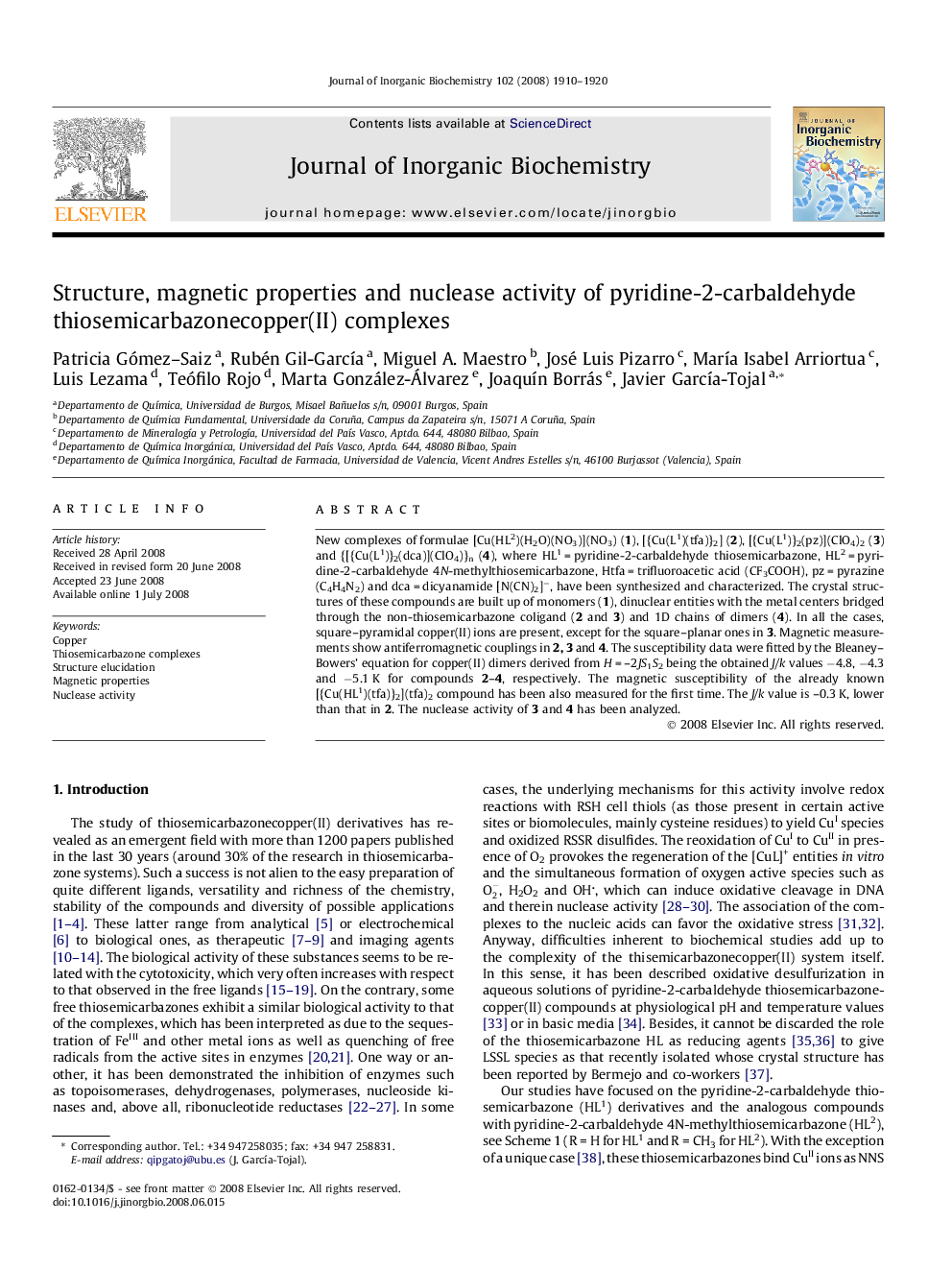| Article ID | Journal | Published Year | Pages | File Type |
|---|---|---|---|---|
| 1316447 | Journal of Inorganic Biochemistry | 2008 | 11 Pages |
New complexes of formulae [Cu(HL2)(H2O)(NO3)](NO3) (1), [{Cu(L1)(tfa)}2] (2), [{Cu(L1)}2(pz)](ClO4)2 (3) and {[{Cu(L1)}2(dca)](ClO4)}n (4), where HL1 = pyridine-2-carbaldehyde thiosemicarbazone, HL2 = pyridine-2-carbaldehyde 4N-methylthiosemicarbazone, Htfa = trifluoroacetic acid (CF3COOH), pz = pyrazine (C4H4N2) and dca = dicyanamide [N(CN)2]−, have been synthesized and characterized. The crystal structures of these compounds are built up of monomers (1), dinuclear entities with the metal centers bridged through the non-thiosemicarbazone coligand (2 and 3) and 1D chains of dimers (4). In all the cases, square–pyramidal copper(II) ions are present, except for the square–planar ones in 3. Magnetic measurements show antiferromagnetic couplings in 2, 3 and 4. The susceptibility data were fitted by the Bleaney–Bowers’ equation for copper(II) dimers derived from H = –2JS1S2 being the obtained J/k values −4.8, −4.3 and −5.1 K for compounds 2–4, respectively. The magnetic susceptibility of the already known [{Cu(HL1)(tfa)}2](tfa)2 compound has been also measured for the first time. The J/k value is –0.3 K, lower than that in 2. The nuclease activity of 3 and 4 has been analyzed.
